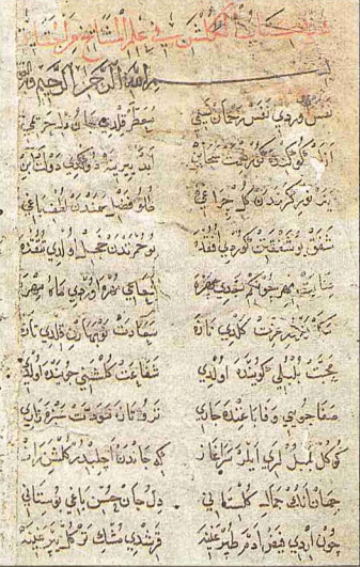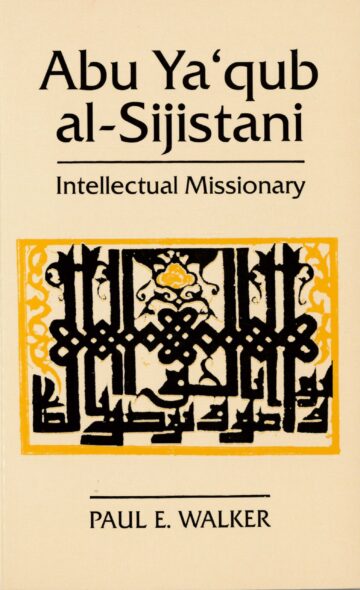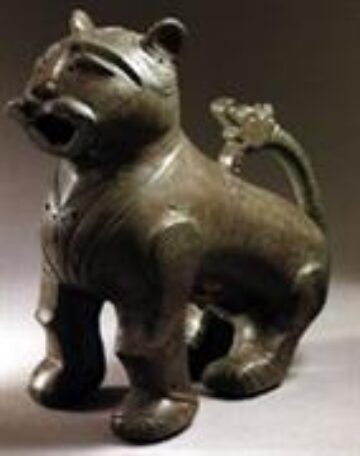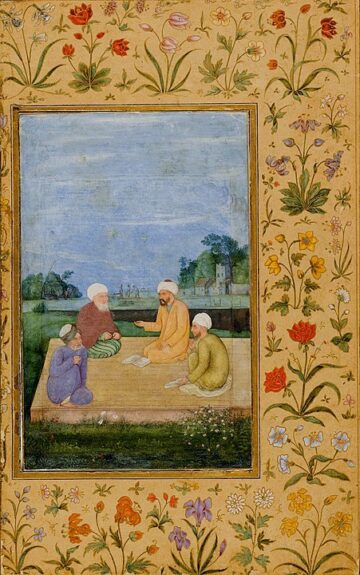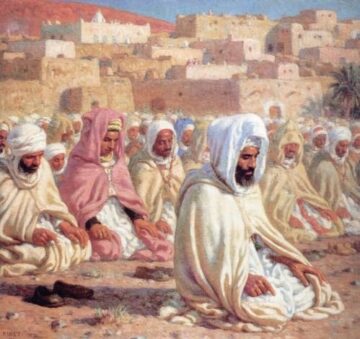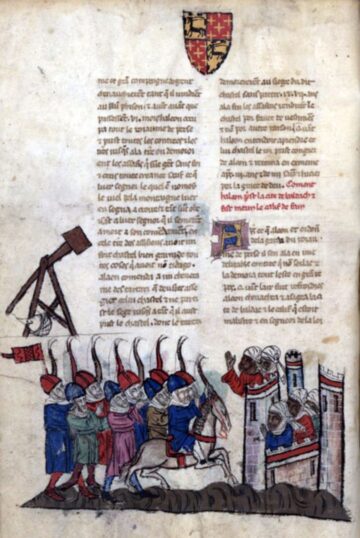This article was originally published under the title ‘Dezkuh’ in Encyclopaedia Iranica, Vol. VI, p. 354, ed. Ehsan Yarshater, Costa Mesa, California, 1996.
Dezkuh (or Sahdez), a medieval mountain fortress situated in central Persia on the summit of Mount Soffa, about 8 km south of Isfahan. No information is available on the construction date of this strategically situated fortress, which guarded the routes to Isfahan, but, like some other ruins in the same region, it may have been built as early as the Sasanian period (Minasian, pp. 17-18, 20,61-62, pls. 1-45).
Ibn al-Atir attributed (X, pp. 109-10) the construction of this fortress, which he called the “fortress (qal‘a) of Isfahan,” to the Saljuq Sultan Maleksah (465-85/1072-92), but this attribution does not seem reliable. It is more likely that Maleksah merely rebuilt the fortress as a major military outpost of Isfahan, the chief Saljuq capital; it was from his time that the fortress became more generally designated as Sahdez, reflecting his reconstruction of the existing Dezkuh (Zahir-al-Din, p. 40: Ravandi, p. 156).
The historical importance of Dezkuh
The historical importance of Dezkuh is particularly related to the activities of the Nizari IsmailisAdherents of a branch of Shi’i Islam that considers Ismail, the eldest son of the Shi’i Imam Jaʿfar al-Ṣādiq (d. 765), as his successor. in Persia during the early Alamut period (487-654/ 1094-1256). Ismaili da‘is (missionaries) had been active in the region of Isfahan during the 11th century, and by the 460s/1170s ‘Abd-al-Malek b. ‘Attas, the chief da‘i of Persia and Iraq at the time, had established his headquarters at Isfahan. Hasan Sabbah’s seizure of Alamut in 483/1090, which marked the effective foundation of the Nizari state in Persia, further encouraged the da‘wa, or missionary activities, of Ahmad b. ‘Abd-al-Malek b. ‘Attas who had succeeded his father as da‘i of Isfahan. Ahmad, posing as a schoolmaster, gradually succeeded in converting the garrison of Dezkuh, comprised mostly of Deylami soldiers with Shi‘ite tendencies.
By 494/1100, or possibly a few years earlier, Ahmad had gained possession of Dezkuh, which he fortified like other Nizari mountain castles in Persia (Zahir-al-Din, pp. 40-41; Ravandi, pp. 155 ff.; Rasid-al-Din, 1338 S./1959, p. 120; idem, 1960, pp. 69-74; Kasani, p. 156; Mirkand, Tehran, IV, pp. 306 ff.; Hodgson, pp. 85-86; Daftary, pp. 354-55). The Nizari capture of Dezkuh was a serious blow to the Saljuqs, especially as soon afterward Ahmad b. ‘Abd-al-Malek began to collect taxes in the districts around the fortress. Accordingly, the chief focus of the anti-Nizari campaign conducted by Sultan Mohammad b. Maleksah (498-51 1/1105-18) was Dezkuh.
The sultan with a large force besieged the fortress in 500/1107, but the tactics of Ahmad, who involved the Sunnite ‘ulama’ of Isfahan in a long religious disputation, in which he argued that the Ismailis were also true Muslims, delayed the conquest for almost a year, until the ‘ulama’ had rendered their judgment. Eventually battle was joined; Ahmad and his small band of nizar fought the Saljuqs gallantly from tower to tower. In the final assault, most of the Nizari defenders of Dezkuh were killed; Ahmad was captured and later executed in Isfahan (Zahir-al-Din, pp. 41-42; Ravandi, pp. 158-161; Bondari, pp. 90-91; Ibn al-Atir, X, pp. 151-52; Ibn al-Qalanesi, pp. 151-56, containing the text of the victory statement issued on the occasion; Rashid-al-Din, 1338 S./1959, pp. 121-22; Kasani, pp. 156-57; Hodgson, pp. 95-96; Lewis, pp. 53-55: Daftary, pp. 361-62). The conquest of Dezkuh is celebrated in one of the versions of the introduction to the Bahman-nama (Storey-de Blois, V, 564-65).
Dezkuh was demolished soon after on the Sultan’s orders, as he feared its recapture by the NizarisAdherents of a branch of the Ismailis who gave allegiance to Nizar, the eldest son of the Fatimid Imam-caliph al-Mustansir (d. 1094) as his successor.. The extensive ruins have been investigated and described by Caro O. Minasian (1897-1972), who was evidently the first person to identify and study the site in modern times (pp. 21-39, 52-54).
- Fath b. ‘Ali Bondari, Zobdat al-nosra wa nokbat al-‘esra, in Houtsma, Recueil II.
- F. Daftary, The Ismailis: Their History and Doctrines, Cambridge, 1990.
- Ibn al-Atir, al-Kamel fi‘l-tarik X, Cairo, 1303/ 1885.
- Ibn al-Qalanesi, Dayl t‘arik Demasq, ed. H.F. Amedroz, Leiden, 1908.
- M. G. S. Hodgson, The Order of Assassins, the Hague, 1955.
- Honarfar, Esfahan, pp. 63 ff. Abu’l-Qasem ‘Abd-Allah Kasani, Zobdat al-tawarik. Bakr-e Fatemian wa Nizarian, ed. M.-T. Danespazuh, 2nd ed., Tehran, 1366S./1997.
- B. Lewis, The Assassins. A Radical Sect in Islam, London, 1967.
- M. Mehryar, “Sahdez koja’st?” Nasriya-ye Daneskada-ye Adabiyat-e Esfahan 1, 1343 S./1964, pp. 87-157.
- C. O. Minasian, Shah Diz of Ismaili Fame: Its Siege and Destruction, London, 1971.
- Rasid-al-Din Fazl Allah Jame‘ al-tawarik. Qesmat-e Esma’ilian , ed M.-T. Danespazuh and M. Modarresi Zanjani, Tehran, 1338 S./1959.
- Idem, Jame‘ al-tawarik. Tarik-e Al-e SaljuqMajor Muslim dynasty of Turkish origin in Persia and Iraq (1040–1194) and Syria (1078–1178)., ed. A. Ate, Ankara, 1960.
- Mohammad b. ‘Ali Ravandi, Rahat al-sodur wa ayat al-sorur, ed. M. Eqbal, London, 1921.
- Zahiral-Din Nisapuri, Saljuq-nama, Tehran, 1332 S/ 1953.
Author

Dr Farhad Daftary
Co-Director and Head of the Department of Academic Research and Publications
An authority in Shi’i studies, with special reference to its Ismaili tradition, Dr. Daftary has published and lectured widely in these fields of Islamic studies. In 2011 a Festschrift entitled Fortresses of the Intellect was produced to honour Dr. Daftary by a number of his colleagues and peers.


